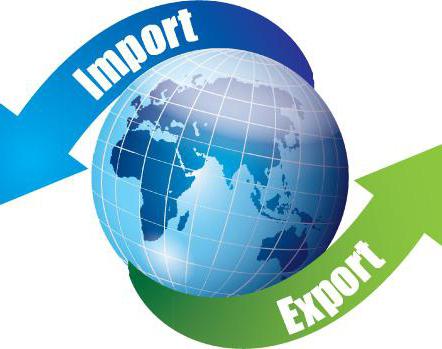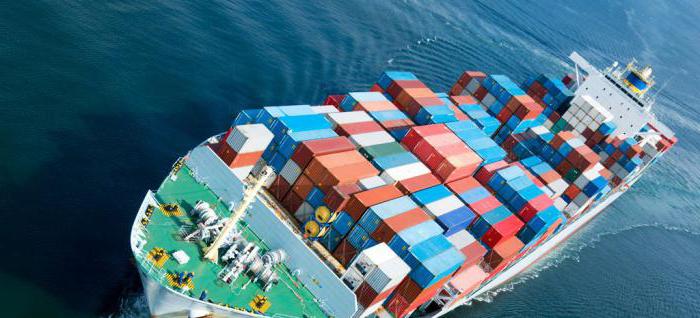You will not be surprised for a long time by the presence in the supermarket of things from around the world. If desired, you can buy bananas from South America, tea from Sri Lanka and coffee from Brazil all year round. So every day we are influenced by international trade. Similarly, foreigners buy our products at home. The foreign trade balance is the difference between the value of the exported from the country and imported into it. The larger it is, the better for the state. Although there are exceptions to this rule. Today we will talk about the balance of the balance of foreign trade, its features and role in assessing economic development.

Definition of a concept
International trade allows expanding markets for goods and services. It provides an opportunity for consumers to buy products that, otherwise, would not be available to them. Globalization has brought together almost all countries. Foreign trade in its significance came to the fore. Only for closed economies, such as the DPRK, is it exclusively important to exchange goods and services internally.
On practice
The largest exporters, when comparing their rate of export of goods abroad with the gross domestic product of these countries, are Singapore (188%), Ireland (114%), the United Arab Emirates (98%), Malaysia (74%) and Switzerland (64% ) However, this information does not say anything about the balance. foreign trade. A country can export and import a lot on an extraordinary scale. And her trade balance will be negative. The balance is the difference between export and import. If we take these indicators into consideration, it turns out that Singapore, Ireland, the United Arab Emirates, Malaysia and Switzerland do have a positive trade balance. And negative - Brazil, Ethiopia, USA and Japan. The so-called neutral balance is inherent in Argentina. Its export in value terms is approximately equal to import into the country.

Surplus
Foreign trade has recently been able to grow at a much faster pace than production and gross domestic product. This means that the international component due to globalization changes has become fundamental to the development of national economies. A foreign trade surplus occurs when exports in value terms exceed imports. There is an influx of national currency into the country from foreign markets. Such a situation is a favorable situation, therefore, governments that regulate foreign trade are striving for exactly this outcome. In the US, trade balance data is published monthly by the Bureau of Economic Analysis. This indicator is a fundamental factor in determining the exchange rate in global markets. With a positive balance, the state has control over most of its currency. The situation when exports exceed imports strengthens the country's national currency. Although other market factors are important here. A major role in the exchange rate of the national currency also has foreign investment. If we talk only about trade effects, then a surplus means a high demand for goods produced in the country. It promotes price increases by strengthening the national currency. Further increase in exports only improves the situation.

Foreign trade negative balance
The reverse situation is a negative balance. A negative foreign trade balance means that the value of goods imported from abroad is greater than the value exported from the country. This situation has the opposite effect on the exchange rate of the national currency. A negative trade balance means little demand for it in global markets. This reduces its rate in relation to other currencies. To regulate its volatility, countries can use a portfolio of investments in foreign accounts. Also, governments sometimes peg their national currency to a more stable monetary unit of another state. In this case, we are talking about a fixed rate, for which there is no difference between export and import.
Sometimes they also calculate the relative balance of foreign trade. It is the result of dividing the book value by the number of inhabitants or gross domestic product. The second option is more often used.

Trade balance effect
Many economists believe that the country's continued negative balance negatively affects the national economy. This situation leads to the fact that manufacturers begin to locate their enterprises abroad. This further depreciates the national currency and leads to a drop in interest rates. However, the country with the largest trade deficit is the United States of America. Therefore, with proper regulation, it may not have any effect on the economy.
How a positive or negative balance will affect often depends on the stage of the business cycle. During the recovery period, the trade deficit can have a positive effect. This is due to the fact that a lot of goods are imported into the country, which keeps prices low. A trade surplus is best during a recession. It helps create jobs by increasing demand for national goods.

Theoretical explanation
There are several concepts that explain the desire of states to enter the international market for goods and services. Well-known scholars such as Adam Smith and David Ricardo also dealt with this issue. Historically, the first theory that tried to explain the importance of a positive trade balance was Marcantilism. They believed that exports should always exceed imports. Mercantilists welcomed protectionist measures. Gold and other luxury goods were generally not subject to export across national borders. Smith and Ricardo no longer viewed trading as a zero-sum game. They developed a theory of absolute and comparative advantage. Among others, the concept explaining international trade, the developments of Hackscher and Olin, Lenotiev, Vernon, Porter, Stolper and Samuelson.








